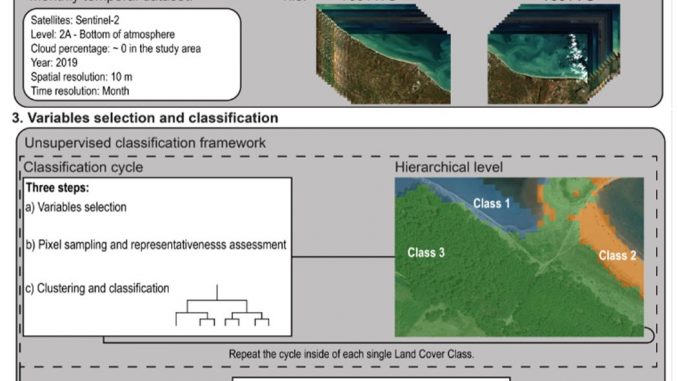
Coastal dunes are found at the boundary between continents and seas representing unique transitional mosaics hosting highly dynamic habitats undergoing substantial seasonal changes. Here, we implemented a land cover classification approach specifically designed for coastal landscapes accounting for the within-year temporal variability of the main components of the coastal mosaic: vegetation, bare surfaces and water surfaces. Based on monthly Sentinel-2 satellite images of the year 2019, we used hierarchical clustering and a Random Forest model to produce an unsupervised land cover map of coastal dunes in a representative site of the Adriatic coast (central Italy). As classification variables, we used the within-year diversity computed through Rao’s Q index, along with three spectral indices describing the main components of the coastal mosaic (i.e., Modified Soil-adjusted Vegetation Index 2—MSAVI2, Normalized Difference Water Index 2—NDWI2 and Brightness Index 2—BI2). We identified seven land cover classes with high levels of accuracy, highlighting different covariates as the most important in differentiating them. The proposed framework proved effective in mapping a highly seasonal and heterogeneous landscape such as that of coastal dunes, highlighting Rao’s Q index as a sound base for natural cover monitoring and mapping. The applicability of the proposed framework on updated satellite images emphasizes the procedure as a reliable and replicable tool for coastal ecosystems monitoring.
Marzialetti F., Di Febbraro M., Malavasi M., Giulio S., Acosta ATR., Carranza ML. 2020. Mapping Coastal Dune Landscape through Spectral Rao’s Q Temporal Diversity. Remote Sens. 12, 2315; https://doi:10.3390/rs12142315
dowlnoad

Commenta per primo